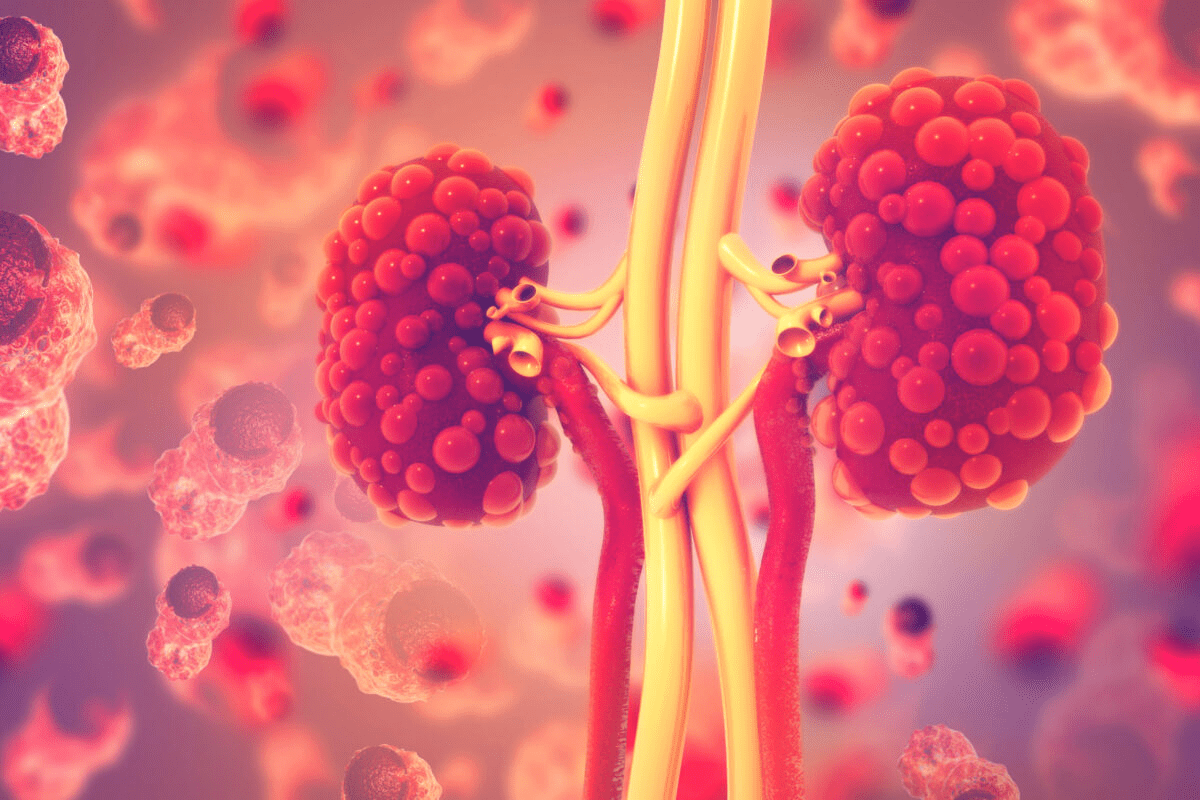Last Updated on November 26, 2025 by Bilal Hasdemir

Advances in breast cancer treatment have led to many effective medications. These have greatly improved patient outcomes. At Liv Hospital, we focus on personalized care with the latest FDA-approved drugs. This ensures our patients get the best treatment.
New breakthroughs in targeted therapies and chemotherapy have opened up more treatment options. Drugs like abemaciclib (Verzenio), palbociclib (Ibrance), and ribociclib (Kisqali) are promising for HR-positive, HER2-negative breast cancer. Also, ado-trastuzumab emtansine (Kadcyla) and fam-trastuzumab deruxtecan-nxki (Enhertu) are approved for treating metastatic breast cancer.
At Liv Hospital, we blend expertise and compassion to create tailored treatment plans. We use the most advanced FDA-approved drugs available. Our goal is to improve our patients’ quality of life and medical outcomes through innovative care.
Key Takeaways
- Numerous FDA-approved drugs are available for treating breast cancer, including targeted therapies and chemotherapy.
- Liv Hospital offers personalized care using the latest FDA-approved medications.
- Advanced treatments such as abemaciclib, palbociclib, and ribociclib are used for HR-positive, HER2-negative breast cancer.
- Ado-trastuzumab emtansine and fam-trastuzumab deruxtecan-nxki are approved for metastatic breast cancer treatment.
- Liv Hospital is committed to delivering high-quality, patient-centered care.
The Landscape of Breast Ca Medications Today
The world of breast cancer treatments is now filled with many options. This shows how much we’ve learned about the disease.
Types of Breast Cancer and Treatment Approaches
Breast cancer is not just one disease. It’s a group of cancers with different features and behaviors. The main types are ductal carcinoma in situ (DCIS), invasive ductal carcinoma (IDC), and invasive lobular carcinoma (ILC).
Treatment plans change based on the cancer type, stage, and the patient’s health. For example, hormone receptor-positive breast cancers might need hormone therapies. On the other hand, HER2-positive cancers might need treatments that target the HER2 protein.
The Evolution of Breast Cancer Drug Therapies
Breast cancer treatment has changed a lot over time. This change comes from learning more about cancer and finding new treatments. While traditional chemotherapy is important, we’re moving towards more targeted and personalized care.
The arrival of CDK4/6 inhibitors has changed how we treat hormone receptor-positive metastatic breast cancer. Also, HER2-targeted therapies have greatly improved results for HER2-positive breast cancer patients.
As we learn more about breast cancer’s genetics and biology, we’ll see even better treatments. These new treatments will help patients live better and longer lives.
How Breast Cancer Medications Work in the Body
Breast cancer medications have changed how we treat the disease. It’s important to understand how they work. We’ll look at their mechanisms of action and the drug delivery systems used.
Mechanisms of Action
Breast cancer medications fight cancer in different ways. Hormone therapies block hormones like estrogen and progesterone. These hormones can help cancer grow. For example, chemotherapy for breast cancer kills cancer cells throughout the body.
Targeted therapies aim at specific molecules in cancer cells. For instance, HER2-targeted therapies target the HER2 protein in HER2-positive breast cancer.
Drug Delivery Systems and Administration Methods
The way breast cancer medications are delivered is key to their success. They can be taken orally, given through an IV, or injected under the skin. The choice depends on the medication, cancer stage, and patient health.
Some treatments are given in cycles. This means periods of treatment followed by rest. It helps manage side effects and improves patients’ quality of life.
“Understanding the mechanisms of action of breast cancer medications is key to appreciating their therapeutic value and their side effects.” – Medical Oncologist
Hormone Therapy Medications for Breast Cancer
For those with hormone receptor-positive breast cancer, hormone therapy is a key treatment. It lowers hormone levels or blocks their effect on cancer cells. This slows or stops cancer growth.
Tamoxifen (Nolvadex)
Tamoxifen is a SERM used for decades in treating hormone receptor-positive breast cancer. It blocks estrogen’s action on cancer cells, stopping their growth. Tamoxifen works best for premenopausal women and is often used with other treatments.
Anastrozole (Arimidex)
Anastrozole lowers estrogen levels in the body, slowing cancer growth. It’s mainly for postmenopausal women. Studies show it reduces cancer recurrence risk.
Letrozole (Femara)
Letrozole is an aromatase inhibitor for postmenopausal women with hormone receptor-positive breast cancer. It reduces estrogen production, stopping cancer cell growth. Letrozole is effective in both early and advanced breast cancer.
Exemestane (Aromasin)
Exemestane is an aromatase inhibitor for postmenopausal women with hormone receptor-positive breast cancer. It blocks estrogen production. Exemestane is often given after tamoxifen or another aromatase inhibitor.
Medications like tamoxifen, anastrozole, letrozole, and exemestane have greatly improved treatment for hormone receptor-positive breast cancer. While effective, they can cause side effects. It’s important to talk to a healthcare provider about the benefits and risks.
- Benefits of Hormone Therapy:Reduces cancer recurrence risk
- Slows or stops cancer growth
- Works for early and advanced cancer
- Common Side Effects:Hot flashes
- Night sweats
- Mood changes
Patients should discuss their treatment options and concerns with their healthcare provider. Knowing about hormone therapy medications and their side effects helps patients make informed decisions.
CDK4/6 Inhibitors: Revolutionary Breast Cancer Treatments
CDK4/6 inhibitors are a new class of drugs for breast cancer. They have shown great promise in helping patients live longer without their cancer getting worse. This is true for those with hormone receptor-positive (HR-positive), HER2-negative advanced or metastatic breast cancer.
We will look at how these drugs work, their benefits, and possible side effects. We will focus on three important drugs: abemaciclib, palbociclib, and ribociclib.
Abemaciclib (Verzenio)
Abemaciclib is a CDK4/6 inhibitor that works well against HR-positive, HER2-negative advanced breast cancer. It can be used alone or with hormone therapy.
Studies have shown that abemaciclib with fulvestrant improves how long patients live without their cancer getting worse. This makes it a good choice for those who have not responded to hormone therapy.
Palbociclib (Ibrance)
Palbociclib was the first CDK4/6 inhibitor approved for HR-positive, HER2-negative advanced breast cancer. It is given with hormone therapy, like letrozole or fulvestrant.
The PALOMA trials have shown that palbociclib with hormone therapy helps patients live longer without their cancer getting worse. This has made palbociclib a standard treatment for advanced HR-positive breast cancer.
Ribociclib (Kisqali)
Ribociclib is another CDK4/6 inhibitor that has shown great benefits in treating HR-positive, HER2-negative advanced breast cancer. It is given with hormone therapy, such as an aromatase inhibitor or fulvestrant.
The MONALEESA trials have shown that ribociclib with hormone therapy improves survival and how long patients live without their cancer getting worse. This highlights the importance of ribociclib as a treatment option.
In conclusion, CDK4/6 inhibitors like abemaciclib, palbociclib, and ribociclib are a big step forward in treating HR-positive, HER2-negative breast cancer. They help patients live longer and improve survival when used with hormone therapy. These drugs are now a key part of modern breast cancer treatment.
HER2-Targeted Breast Cancer Medications
HER2-targeted breast cancer medications have greatly improved treatment results. These drugs are for HER2-positive breast cancer, where the HER2 protein is too much or the HER2 gene is too big. They are made to target this issue, giving patients better and more precise treatments.
Trastuzumab (Herceptin)
Trastuzumab was the first drug to target HER2 in breast cancer. It blocks the HER2 protein, stopping cancer cells from growing. Studies show it helps patients live longer when used with chemotherapy.
Clinical Benefits: Better survival rates, less chance of cancer coming back.
Pertuzumab (Perjeta)
Pertuzumab works differently than trastuzumab by binding to a different part of the HER2 protein. Together with trastuzumab and chemotherapy, it makes treatment even better for HER2-positive breast cancer patients.
Clinical Benefits: Better results when used with trastuzumab, more complete responses.
Ado-trastuzumab Emtansine (Kadcyla)
Ado-trastuzumab emtansine combines trastuzumab with a chemotherapy called DM1. It targets HER2-positive cancer cells, protecting healthy cells.
Clinical Benefits: Longer time without cancer growing, targeted chemotherapy.
Fam-trastuzumab Deruxtecan-nxki (Enhertu)
Fam-trastuzumab deruxtecan-nxki is a new drug that works well against HER2-positive breast cancer, even after many treatments. Its design might help it be more effective.
Clinical Benefits: Strong effects against cancer, better results in patients who have tried many treatments.
These HER2-targeted drugs are big steps forward in treating HER2-positive breast cancer. They focus on the cancer’s specific traits, making them more effective and less harsh than regular chemotherapy.
PARP Inhibitors and Other Targeted Therapies
Targeted therapies, like PARP inhibitors, are changing how we treat breast cancer. They offer more personalized and effective care. This shift in treatment strategies is thanks to these new therapies.
Olaparib (Lynparza)
Olaparib is a PARP inhibitor that helps treat breast cancer with BRCA1 or BRCA2 mutations. It blocks the PARP enzyme, which is key in DNA repair. This kills cancer cells that can’t repair their DNA.
Talazoparib (Talzenna)
Talazoparib is another PARP inhibitor. It shows significant clinical benefit in patients with germline BRCA-mutated HER2-negative breast cancer. It works like olaparib, targeting cancer cells with DNA repair issues.
Alpelisib (Piqray)
Alpelisib targets the PI3K pathway, often faulty in breast cancer. It’s used with fulvestrant for HR-positive, HER2-negative advanced breast cancer with PIK3CA mutation.
Everolimus (Afinitor)
Everolimus is an mTOR inhibitor for advanced HR-positive, HER2-negative breast cancer with exemestane. It blocks the mTOR pathway, vital for cell growth and proliferation.
These targeted therapies are a big step forward in breast cancer treatment. They offer better outcomes and new hope for patients. Here’s a quick look at these medications:
| Medication | Mechanism of Action | Indications |
|---|---|---|
| Olaparib (Lynparza) | PARP inhibition | BRCA-mutated breast cancer |
| Talazoparib (Talzenna) | PARP inhibition | Germline BRCA-mutated HER2-negative breast cancer |
| Alpelisib (Piqray) | PI3K inhibition | HR-positive, HER2-negative breast cancer with PIK3CA mutation |
| Everolimus (Afinitor) | mTOR inhibition | HR-positive, HER2-negative advanced breast cancer |
We’re committed to finding the most effective and personalized treatments for our patients. As we learn more about PARP inhibitors and other targeted therapies, we’re excited for the future.
Breakthrough Medications for Metastatic Breast Cancer
Metastatic breast cancer treatment has made big strides with new, targeted medicines. These advances bring hope to patients by providing better treatment choices with fewer side effects. We’ll look at three key medications: datopotamab deruxtecan, sacituzumab govitecan, and tucatinib.
Datopotamab Deruxtecan (Datroway)
Datopotamab deruxtecan is an antibody-drug conjugate (ADC) that targets TROP2. This protein is often found in many cancers, including metastatic breast cancer. It works by delivering a toxic payload directly to cancer cells, protecting healthy tissues.
Mechanism of Action: Datopotamab deruxtecan attaches to TROP2 on cancer cells. Once inside, it releases its toxic payload, killing the cells.
Sacituzumab Govitecan (Trodelvy)
Sacituzumab govitecan is another ADC that targets Trop-2. It’s shown to be effective against metastatic triple-negative breast cancer (TNBC). TNBC is aggressive and hard to treat.
Clinical Benefits: Studies have shown it improves overall survival and offers lasting responses in patients.
Tucatinib (Tukysa)
Tucatinib is a tyrosine kinase inhibitor that targets HER2. It’s used with other treatments for HER2-positive metastatic breast cancer.
Efficacy: Tucatinib has been shown to reduce disease progression and improve survival when combined with trastuzumab and capecitabine.
| Medication | Target | Indication | Notable Benefits |
|---|---|---|---|
| Datopotamab Deruxtecan | TROP2 | Metastatic Breast Cancer | Effective delivery of cytotoxic payload to cancer cells |
| Sacituzumab Govitecan | Trop-2 | Metastatic TNBC | Significant overall survival benefits |
| Tucatinib | HER2 | HER2-positive Metastatic Breast Cancer | Improved overall survival and reduced disease progression |
These new medicines are big steps forward in treating metastatic breast cancer. They offer new ways to improve patient outcomes.
Managing Side Effects and Improving Quality of Life
Dealing with breast cancer treatment side effects is key. Breast cancer drugs aim to fight cancer but can affect your life quality. It’s important to understand and manage these effects.
Common Side Effects of Breast Cancer Medications
Breast cancer drugs can cause side effects, from mild to severe. Common ones include fatigue, nausea, hair loss, and hot flashes. The severity and type of side effects depend on the drug, dosage, and patient factors.
For example, tamoxifen can lead to hot flashes and mood swings. Chemotherapy may cause hair loss and a higher risk of infection. Knowing these side effects helps patients prepare and manage them better.
Mitigation Strategies and Supportive Care
Reducing side effects is a big part of breast cancer treatment. Supportive care like nutrition advice, psychological support, and physical therapy can greatly improve life quality.
- Nutritional changes to help with nausea and keep energy up
- Exercise plans that fit the patient’s health and abilities
- Psychological support for the emotional effects of treatment
- Medications for specific side effects, like anti-nausea drugs
When to Contact Your Healthcare Provider
It’s important for patients to know when to talk to their doctor about side effects. Severe or ongoing side effects need to be reported. This might mean changing the treatment plan.
Be aware of signs that mean you need to see a doctor right away. These include severe allergic reactions, big changes in heart rate or blood pressure, or severe pain. Talking to your healthcare team quickly can help avoid problems and improve results.
Liv Hospital’s Approach to Breast Cancer Treatment
At Liv Hospital, we focus on top-notch breast cancer treatment for each patient. We make sure every treatment plan fits the patient’s needs and wishes. This approach is all about putting the patient first.
Patient-Centered Care Protocols
Our care is designed to support patients fully during their treatment. We know treating breast cancer is tough and emotional. So, we give patients a team of experts to help them.
This team includes doctors, surgeons, and more. They work together to create a treatment plan just for you.
Key parts of our care include:
- Talking with patients to understand their needs
- Creating treatment plans that fit each patient
- Having a team of experts to help
- Support and guidance every step of the way
Integration of FDA-Approved Medications
Liv Hospital uses the newest FDA-approved medications in our treatments. We want to give patients the best and newest treatments. Our doctors keep up with new research and trials to offer the latest therapies.
Innovative Treatment Solutions
We also offer new and effective treatments. This includes joining clinical trials and using the latest tools and techniques. Our aim is to treat breast cancer in a way that helps patients feel better overall.
We combine caring for patients with the latest medical science. Our goal is to make a big difference in our patients’ lives.
Conclusion: Advancements and Future Directions in Breast Cancer Treatment
Breast cancer treatment has seen big changes in recent years. This brings new hope to patients all over the world. New medicines and therapies have made treatments better and improved life for patients.
Targeted therapies like CDK4/6 inhibitors and HER2-targeted drugs have changed how we treat breast cancer. These new tools help doctors give treatments that are more tailored and effective.
As research keeps moving forward, we expect even more progress in treating breast cancer. New treatments and medicines are being made to meet the needs of breast cancer patients. We’re dedicated to giving top-notch healthcare to international patients. We’ll keep using the latest in breast cancer treatment and look for new ways to help.
FAQ
What are the most common breast cancer medications?
Common breast cancer meds include Tamoxifen (Nolvadex) and Anastrozole (Arimidex). Also, Letrozole (Femara) and Exemestane (Aromasin) are used for hormone-positive cancer. For HER2-positive cancer, Trastuzumab (Herceptin) and Pertuzumab (Perjeta) are key.
How do CDK4/6 inhibitors work in treating breast cancer?
CDK4/6 inhibitors like Abemaciclib (Verzenio) block enzymes that help cancer grow. This slows or stops hormone receptor-positive breast cancer.
What are the benefits of HER2-targeted therapies?
HER2-targeted therapies, like Trastuzumab (Herceptin), target the HER2 protein. This improves outcomes for HER2-positive breast cancer patients.
What are PARP inhibitors used for in breast cancer treatment?
PARP inhibitors, such as Olaparib (Lynparza), treat certain breast cancers. They block an enzyme involved in DNA repair, slowing cancer growth.
How can side effects of breast cancer medications be managed?
Managing side effects includes adjusting doses and using medications to help. Supportive care, like diet changes, also improves quality of life.
What is Liv Hospital’s approach to breast cancer treatment?
Liv Hospital focuses on patient-centered care. They use FDA-approved meds and tailor treatments to each patient, ensuring personalized care.
Are there any new breakthrough medications for metastatic breast cancer?
Yes, new meds like Datopotamab Deruxtecan (Datroway) and Sacituzumab Govitecan (Trodelvy) offer significant benefits. Tucatinib (Tukysa) also shows promise for advanced disease.
How do hormone therapy medications work for breast cancer?
Hormone therapy meds block or lower hormones that feed cancer cells. This slows or stops hormone receptor-positive breast cancer growth.
What are the common side effects of breast cancer medications?
Side effects vary by medication but include hot flashes, fatigue, and hair loss. Discussing these with your doctor is key.
How are breast cancer medications administered?
Medications are given orally, through IV, or by injection. The method depends on the medication and treatment plan.
References
- National Cancer Institute. (n.d.). Approved targeted therapies drug list. Retrieved from https://www.cancer.gov/about-cancer/treatment/types/targeted-therapies/approved-drug-list
- U.S. Food and Drug Administration. (n.d.). Oncology (cancer / hematologic malignancies) approval notifications. Retrieved from https://www.fda.gov/drugs/resources-information-approved-drugs/oncology-cancerhematologic-malignancies-approval-notifications
- Voutsadakis, I. A. (2023). New targeted therapies in breast cancer: Current status and future directions. Frontiers in Oncology, 13, 10416257. https://doi.org/10.3389/fonc.2023.10416257 (PMC Article)
- BreastCancerTrials. (n.d.). Breast cancer drugs and treatment resources. Retrieved from https://www.breastcancertrials.org/BCTIncludes/Resources/BreastCancerDrugs.html
- American Cancer Society. (n.d.). Targeted therapy for breast cancer. Retrieved from https://www.cancer.org/cancer/types/breast-cancer/treatment/targeted-therapy-for-breast-cancer.html








